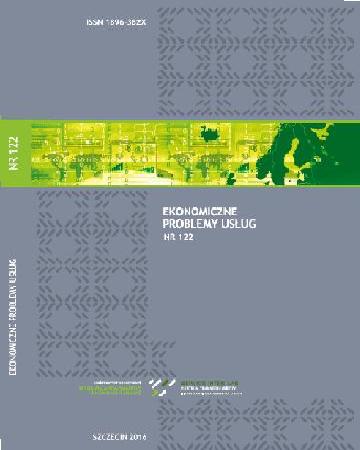
ISSN: 1896-382X
eISSN: 2353-2866
OAI
DOI: 10.18276/epu.2018.130-15



Issue archive /
nr 130 2018
Wspólny bilet kolejowy jako element kształtowania zachowań komunikacyjnych na rynku przewozów pasażerskich
(A INTEGRATED RAILWAY TICKET AS AN ELEMENT OF SHAPING COMMUNICATION BEHAVIORS ON THE PASSENGER TRANSPORT MARKET)
| Authors: |
Grażyna
Rosa
Uniwersytet Szczeciński Wydział Zarządzania i Ekonomiki Usług |
| Keywords: | integrated railway ticket communication behaviours passenger transport market |
| Whole issue publication date: | 2018-03-30 |
| Page range: | 10 (153-162) |
| Klasyfikacja JEL: | D12 L88 L92 |
Abstract
The article presents the idea of a joint rail ticket in relation to the results of transport behavior research on the railway services market, which shows that passengers expect comfortable and functional trains, adequate point infrastructure (stations, stations, stops), density, proper service level, distribution adapted to their needs, and above all, minimizing the effort involved in organizing the transport, which can be provided by an integrated railway ticket. The aim of the article is to present the idea and evaluation of the implementation of an integrated railway ticket as an element of shaping communication behaviors on the passenger transport market. The research area constituted mass passenger transport (by railway undertakings) and individual transport by passenger cars in Poland. In order to achieve this goal, the desk research method was adopted, and supplemented by the available literature and the results of secondary research published by the Railway Transport Office and the Central Statistical Office (GUS). The latter opens new possibilities for railway undertakings in the scope of analysing passengers’ expectations and shaping their communication behaviour.
Download file
Article file
Bibliography
| 1. | Centrum Badań i Edukacji Statystycznej GUS (2015). Badanie pilotażowe zachowań komunikacyjnych ludności w Polsce, etap III – raport końcowy. Jachranka. |
| 2. | Hebel, K. (2013). Zachowania transportowe mieszkańców w kształtowaniu transportu miejskiego. Gdańsk: Fundacja Rozwoju Uniwersytetu Gdańskiego. |
| 3. | Intercity (2017). Pobrane z: https://www.intercity.pl/pl/site/o-nas/dzial-prasowy/aktualnosci/ pasazerowie-wyrazili-opinie-i-preferencje-dotyczace-rozkladu-jazdy-pkp-intercity.html (20.11.2017). |
| 4. | Kurier kolejowy (2017). Pobrane z: kurierkolejowy.eu/aktualnosci/30316/finanse-i-przepisy- -przeszkoda-przy-tworzeniu-wspolnego-biletu.html (10.11.2017). |
| 5. | Sprawozdanie z funkcjonowania rynku transportu kolejowego w 2016 r. (2017). Pobrane z: https://utk.gov. pl/pl/aktualnosci/13293,Sprawozdanie-z-funkcjonowania-rynku-transportu-kolejowego- -w-2016-r.html (21.11.2017). |
| 6. | Urząd Transportu Kolejowego (2017a). Wykorzystanie i potencjał kolejowych przewozów pasażerskich w Polsce. Warszawa. |
| 7. | Urząd Transportu Kolejowego (2017b). Koleje pasażerskie w województwach – dynamika zmian. Warszawa. |
| 8. | Wyszomirski, O. (red.) (1994). Rynek przewozów pasażerskich. Gdańsk: Wyd. UG. |